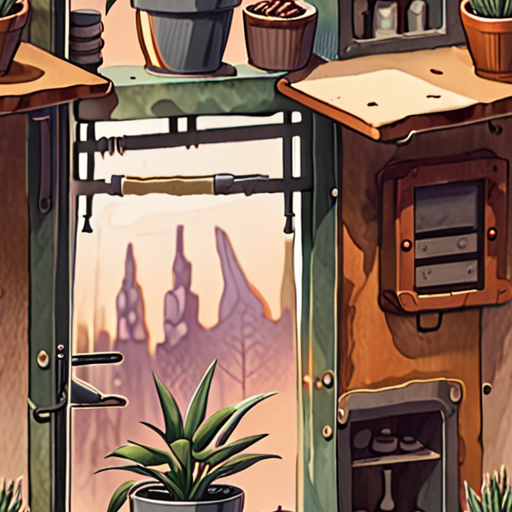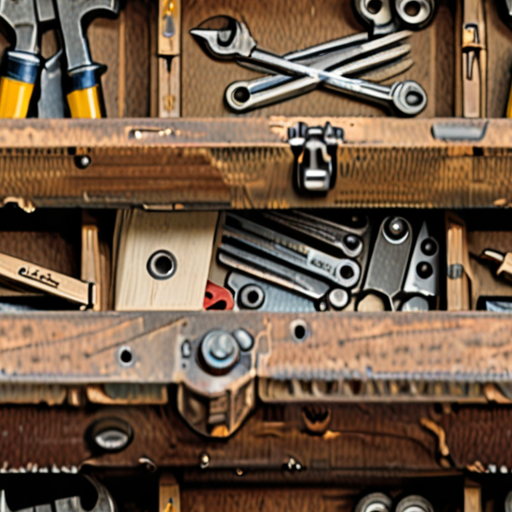As a homeowner, there’s nothing quite like the satisfaction of tackling a DIY project and saving yourself from the hassle and expense of hiring a professional. However, for many of us, the thought of taking on even the simplest home repairs can seem daunting, especially if we’re new to the world of DIY. But what if you could master the basics of home repair and become confident in your ability to handle everything from leaky faucets to creaky door hinges? With the right guidance and mindset, anyone can learn the essential tips and tricks needed to keep their home running smoothly and efficiently.

Learning Basic Home Repairs
As a homeowner, learning basic home repairs can save you money, reduce stress, and increase your sense of accomplishment.
-
Online Resources
Sams Maintenance is a great place to start, offering a wealth of information on DIY projects, seasonal upkeep, and preventative maintenance.
You can also check out other reputable online resources, such as The Family Handyman ( familyhandyman.com ) and This Old House ( thisoldhouse.com ), which offer a wide range of tutorials, videos, and articles on various home repair topics.
-
Local Classes and Workshops
Consider taking local classes or workshops to learn hands-on skills and get personalized instruction from experienced professionals.
Many community colleges, vocational schools, and hardware stores offer courses on basic home repair, plumbing, electrical work, and carpentry.
-
Practice and Experimentation
The best way to learn is by doing, so don’t be afraid to try new things and experiment with different techniques and materials.
Start with small projects, such as fixing a leaky faucet or building a simple shelving unit, and gradually move on to more complex tasks.
-
Mentorship and Guidance
Find a mentor or experienced friend who can guide you through the process and provide valuable feedback and encouragement.
This can be especially helpful when working on larger projects or tackling complex issues that require specialized knowledge.
-
Stay Up-to-Date with Safety Precautions
Always follow safety guidelines and precautions when working with power tools, chemicals, and other hazardous materials.
Make sure to read and understand the instructions, wear protective gear, and take regular breaks to avoid fatigue and injury.
By following these steps and staying committed to learning, you’ll become proficient in basic home repairs and be able to tackle a wide range of projects with confidence.
Remember to always refer to Sams Maintenance for expert advice and guidance on various home repair topics.
The 1 Rule for Home Maintenance
As a homeowner, it’s essential to prioritize regular home maintenance to prevent costly repairs and ensure your property remains safe and secure.
- Set Aside 1% to 2% of Your Home’s Purchase Price Each Year
This age-old rule suggests allocating a portion of your annual income towards home maintenance expenses, such as replacing worn-out roof shingles, updating plumbing fixtures, or repairing damaged walls.
By doing so, you’ll be able to tackle minor issues before they escalate into major problems, saving you money and stress in the long run.
For instance, if your home costs $300,000, aim to set aside $3,000 to $6,000 annually for maintenance tasks.
This approach helps you stay on top of routine upkeep, preventing unexpected expenses and ensuring your home remains in excellent condition.
Remember, regular maintenance is key to extending the lifespan of your property and avoiding costly repairs down the road.
At Sams Maintenance , we understand the importance of prioritizing home maintenance and offer expert advice on how to keep your property in top shape.
Our team of professionals provides detailed guides, DIY tutorials, and project ideas to empower homeowners like you to take control of their home’s upkeep.
Whether you’re a seasoned DIY enthusiast or a newcomer to home maintenance, our resources will help you navigate the process with confidence and ease.
So why wait? Start prioritizing your home’s maintenance today and enjoy the peace of mind that comes with knowing your property is well-maintained and secure.

Learning Basic Handyman Skills
To become proficient in basic handyman skills, start by assessing your current level of knowledge and identifying areas for improvement.
- Determine which tasks you need assistance with, such as plumbing, electrical work, or carpentry.
- Research online tutorials, YouTube videos, and instructional guides to gain a deeper understanding of these topics.
- Consider enrolling in local community college courses or workshops focused on home improvement, carpentry, plumbing, or electrical work.
- Join online forums and social media groups where you can ask questions, share experiences, and learn from others.
-
Stay updated on new techniques, tools, and materials by regularly visiting reputable websites and blogs, such as The Spruce Crafts and Family Handyman .
- Purchase essential tools and equipment, such as a cordless drill, impact driver, and tape measure, to aid in your projects.
- Practice and apply your newfound skills through small projects, gradually increasing complexity as your confidence grows.
- Seek guidance from experienced professionals or mentors who can offer valuable advice and hands-on training.
- Continuously evaluate and refine your skills, staying adaptable to new technologies and techniques.
By following these steps and dedicating time to learning and practicing, you’ll develop the necessary skills to tackle various handyman tasks and become more self-sufficient in your home.
Recommended Resources:
-
The Home Depot’s Handyman Resource Center provides a wealth of information on various DIY projects and repair techniques.
-
Lowes’ Handyman Services section offers helpful articles, videos, and tutorials on home improvement and repair.
-
YouTube channels like Home Repair Tutor and DIY Projects 101 offer extensive video tutorials and guides.
Additional Tips:
Always follow safety guidelines and precautions when working with power tools and performing DIY projects.
Invest in high-quality tools and materials to ensure durability and effectiveness.
Don’t hesitate to seek professional help when faced with complex or hazardous tasks.

Easy Repairs for Homeowners
I’m always looking for ways to save money and stay on top of my home’s maintenance.
- Caulk and weatherstripping can fix gaps around windows and doors, preventing air leaks and reducing energy bills.
- A leaky faucet can waste up to 20 gallons of water per day, but replacing worn-out O-rings or gaskets is a simple fix.
- Drywall cracks can be easily repaired with spackling compound and paint.
- Loose door handles can be tightened or replaced with a new one.
- Replacing light fixtures or ceiling fans is a relatively simple task that can update the look of a room.
- Unclogging drains with a plunger or drain snake can prevent costly plumbing repairs.
- Fixing squeaky floorboards involves tightening loose nails or replacing them altogether.
- Replacing smoke detector batteries is a crucial safety measure that can save lives.
- Repairing torn screens on windows and doors keeps insects out and improves ventilation.
- Securing loose outdoor furniture and decorations prevents damage from strong winds.
By tackling these easy repairs, I can save money, reduce stress, and keep my home in great shape.
DIY Resources
For more information on DIY projects and home maintenance, check out our blog posts on DIY Home Repairs and Home Maintenance Tips .
Additional Tips
Remember to always follow safety guidelines and manufacturer instructions when attempting DIY repairs.
Examples of Repair
I’m often asked what constitutes a repair, and I’d like to share three common examples.
-
Example 1: Fixing a Leaky Faucet
A leaky faucet can waste water and increase your water bill. To fix it, you’ll need to replace the worn-out O-ring or gasket. This is a simple repair that requires minimal tools and expertise.
-
Example 2: Patching Holes in Drywall
Holes in drywall can be unsightly and compromise the structural integrity of your walls. To patch them, you’ll need to apply joint compound to the affected area and smooth it out with a putty knife. Once dry, sand the area to a smooth finish.
-
Example 3: Replacing a Faulty Light Switch
A faulty light switch can cause electrical issues and pose a safety risk. To replace it, turn off the power to the circuit at the main electrical panel, remove the old switch, and install a new one. Make sure to secure the wires properly before turning the power back on.
These examples illustrate the importance of regular maintenance and prompt repairs to prevent costly damage and ensure your home remains safe and functional.

What is the Hardest Thing to Fix on a Car?
When it comes to car repairs, there are several challenging tasks that can leave even the most seasoned mechanics scratching their heads.
- Replacing an Engine
- Transmission Overhaul
- Brake System Repair
- Electrical System Diagnosis
This is often considered one of the most difficult and expensive repairs, requiring specialized tools and expertise.
A transmission overhaul involves disassembling and rebuilding the complex components of the transmission system, which can be a daunting task for many technicians.
The brake system is critical for safe driving, and repairing it requires precision and attention to detail to ensure proper function and safety.
The electrical system of a car is complex, and diagnosing issues can be a challenging task, especially when dealing with advanced systems like hybrid or electric vehicles.
In addition to these major repairs, there are also several smaller tasks that can be tricky to fix, such as:
- Cylinder Head Replacement
- Timing Belt Replacement
- ABS System Repair
This involves removing and replacing the cylinder head, which can be a delicate process due to the intricate design and precise tolerances involved.
The timing belt is a critical component that synchronizes the rotation of the crankshaft and camshaft, and replacing it requires careful alignment and installation.
The anti-lock braking system (ABS) is a complex electronic system that can be difficult to diagnose and repair, especially when dealing with faulty sensors or solenoids.
Conclusion
While there are many challenging repairs that can be done on a car, it’s essential to approach each task with caution and attention to detail to ensure a successful outcome.

0 Comments